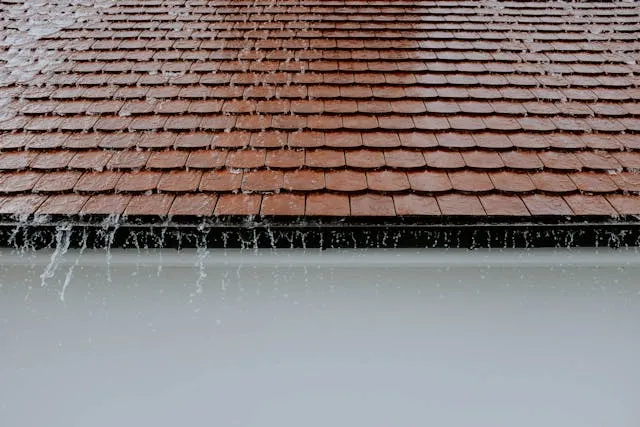Storm Season Roof Prep: Protecting Your Home From Wind and Hail
When storm season arrives, homeowners know just how quickly the weather can turn. Heavy winds, pounding rain, and damaging hail can all take a toll on your roof, the first line of defense for your home. While you can’t control Mother Nature, you can take proactive steps to protect your home and minimize potential damage. Preparing your roof before a storm hits can make the difference between a quick cleanup and costly repairs.
Here’s a detailed guide to getting your roof storm-ready and keeping your home safe during wind and hail season. If you’re looking for reliable roofing Bowie MD homeowners can count on, choosing experienced professionals ensures your home stays protected through every season.
Also read: Why Wholesale Kitchen Cabinets in Virginia Offer Top Quality & Value
1. Start with a Professional Roof Inspection
Before storm season begins, it’s smart to have your roof inspected by a professional. Even small roof issues, like missing shingles or small leaks, can quickly turn into major problems once high winds or hail come through. A Leesburg roofing contractor can check for loose flashing, cracked shingles, clogged gutters, or weakened seals around vents and skylights.
Addressing these concerns ahead of time helps make sure your roof is structurally sound and ready to handle whatever the season brings. Think of it as a routine check-up for your home’s most important shield. Prevention is always cheaper than repair.
2. Check and Clean Your Gutters
Your gutters play a crucial role in storm preparation. When they’re clogged with leaves, twigs, and debris, water can’t flow properly off your roof. This can lead to pooling, leaks, and even foundation damage if water overflows near your home’s base.
Before the storms arrive, clean out your gutters and downspouts thoroughly. Make sure water is directed several feet away from your home’s foundation. You may also want to think about adding gutter guards to lessen debris buildup and decrease the need for future maintenance.
3. Secure Loose or Damaged Shingles
Strong winds can easily lift loose shingles, leaving your roof vulnerable to leaks. If you notice curling, cracked, or missing shingles, replace them promptly. Using roofing cement or nails to secure any areas that appear unstable can help prevent wind from catching under them.
For homes in areas that frequently experience high winds, investing in impact-resistant shingles or reinforced roofing materials may be worth considering. These materials are specifically designed to withstand hail impacts and gusts that would damage standard shingles.
4. Inspect Flashing and Sealants
Flashing the metal material around chimneys, vents, skylights, and roof valleys plays a key role in keeping water out. However, flashing can become loose or corroded over time, creating potential leak points.
Inspect all flashing areas and re-seal them with roofing caulk if needed. Pay close attention to areas where two surfaces meet, as these are common trouble spots. A small tube of sealant can go a long way toward preventing major water damage during a storm.
Also Read: Crew Disquantified Org: Innovation Through Human Values
5. Trim Overhanging Branches
Tree branches can cause significant damage to a roof during a storm. High winds can break limbs, which may fall directly onto your shingles, gutters, or even through the roof itself. In addition, overhanging branches can scrape against shingles and wear away protective granules over time.
Trim back any branches that hang too close to your roof, ideally leaving at least six to ten feet of clearance. This not only helps protect your roof during a storm but also prevents leaves and debris from constantly accumulating in your gutters.
6. Reinforce Weak Areas
If your roof has any areas that seem weak or have previously sustained damage, reinforce them before storm season. Pay special attention to older roof materials, which naturally weaken with time, making them more susceptible to hail and wind.
Adding additional fasteners to the roof decking or applying roofing adhesive beneath the shingles can provide an extra layer of protection. These small reinforcements can reduce the risk of shingles tearing off or roof decking becoming compromised during heavy gusts.
7. Inspect Attic Insulation and Ventilation
Your attic plays an important role in storm protection, too. Proper insulation and ventilation prevent moisture buildup that can weaken the roof structure from underneath. Check for any signs of leaks, such as water stains, damp insulation, or mold growth.
If air circulation is poor, consider adding ridge vents or soffit vents to help regulate temperature and moisture levels. A well-ventilated attic helps extend the life of your roof and minimizes the chances of hidden damage developing after a storm.
8. Document Your Roof’s Condition
Before storm season hits, take photos or videos of your roof and property. This documentation can be invaluable if you ever need to file an insurance claim for storm-related damage. Make sure to include clear shots of your shingles, gutters, flashing, and any other visible components.
Keeping a record of your roof’s condition helps support your case if you need to show the damage occurred as a direct result of a storm rather than from pre-existing issues.
9. Review Your Homeowners Insurance Policy
Even with the best preparation, bad weather can sometimes cause unavoidable damage. Reviewing your homeowners’ insurance policy before storm season ensures you understand your coverage. Confirm whether hail, wind, or falling tree damage is included and whether you’re responsible for any special deductibles related to storm damage.
Knowing this information ahead of time will help you act quickly and confidently if you need to make a claim.
10. Schedule Regular Maintenance
Storm preparation isn’t just a once-a-year task; regular maintenance keeps your roof at its best year-round. Schedule routine inspections, especially after major storms, to catch new damage early.
By consistently maintaining your roof, you’ll lengthen its lifespan and reduce the risk of costly repairs later.
Final Thoughts
Preparing your roof for storm season doesn’t have to be overwhelming. With a proactive approach, inspecting, cleaning, reinforcing, and maintaining, you can significantly reduce the chance of storm-related damage. Your roof works hard to protect your home, so giving it the care and attention it deserves ensures it’s ready when the next big storm rolls through.
A little preparation today can save you from major headaches tomorrow and give you peace of mind knowing your home is protected, no matter what the weather brings.







